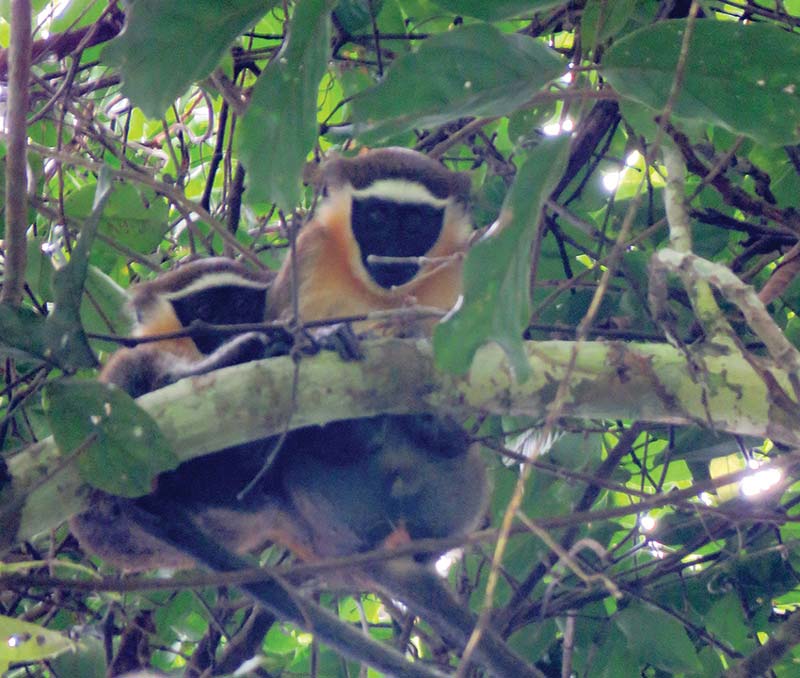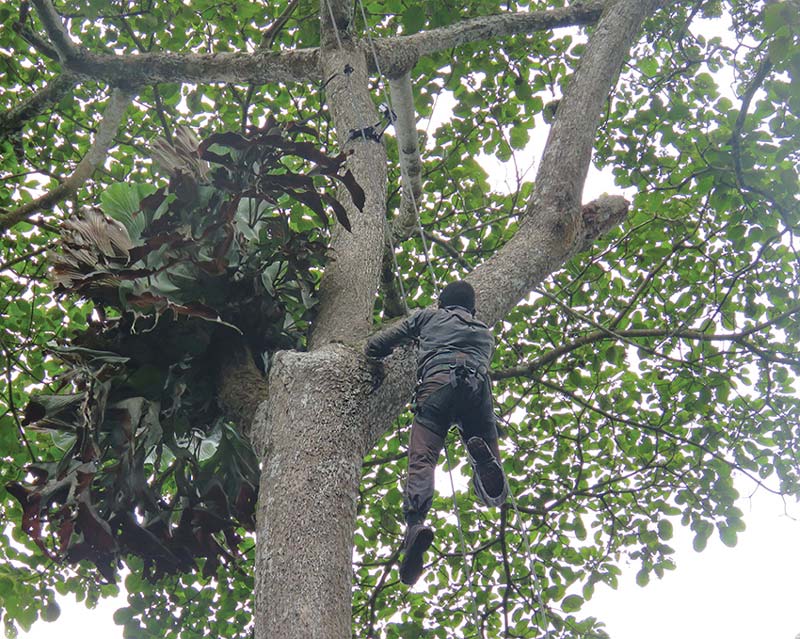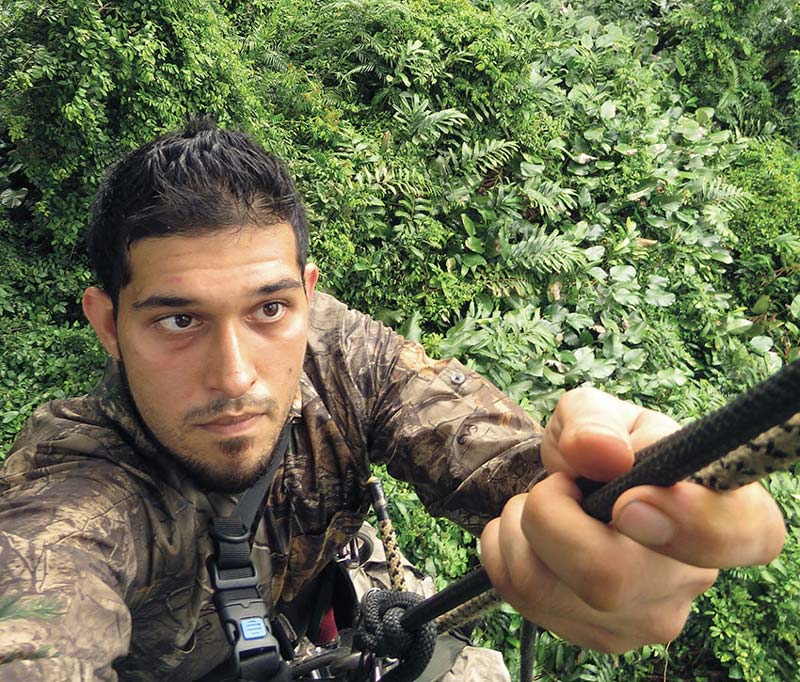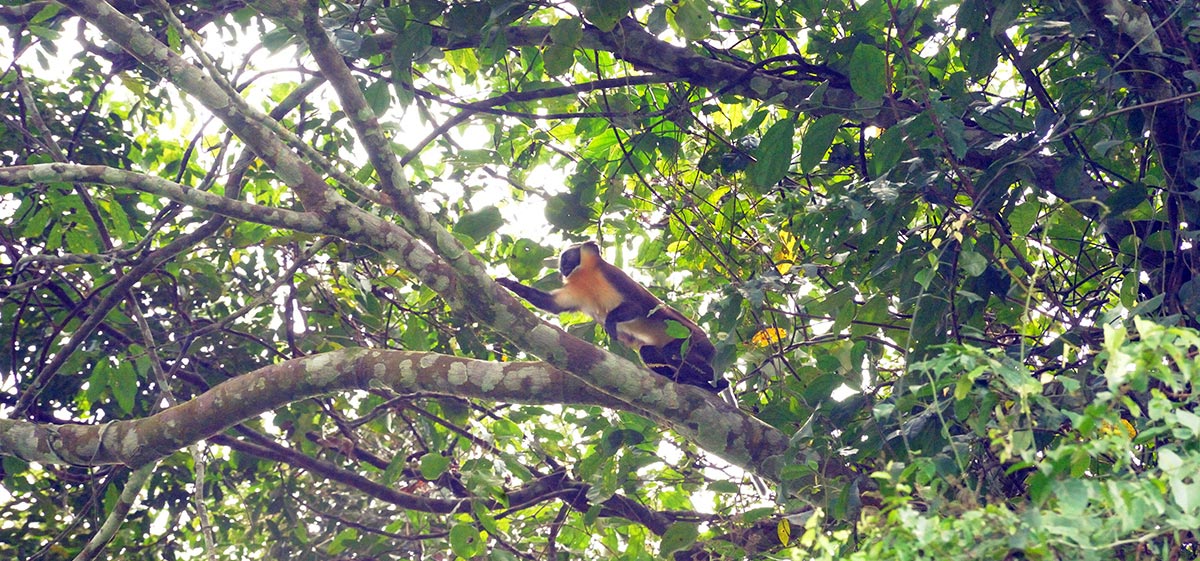First Video of Rare Monkey
Thanks to the work of primatologist Kate Detwiler, Ph.D., FAU is at the epicenter of ground-breaking research involving the Dryas Monkey, an endangered species located in one of the world’s most remote regions — the Democratic Republic of Congo’s Lomami National Park.
For the past three years, Detwiler, an assistant professor of anthropology in the Dorothy F. Schmidt College of Arts and Letters, has been collaborating with the Lukuru Foundation to investigate this little-known species, believed to be at risk of extinction. The Lukuru Foundation, known for their conservation efforts on behalf of great apes and their natural habitat within the Congo Basin, was introduced to the species when notified that a dead monkey, believed to be a Dryas Monkey, was apparently killed by a local hunter. “Extremely elusive, the Dryas Monkey moves stealthily through the shrubs on narrow branches and vines without being detected by humans,” said Detwiler. “The Lukuru field teams have been conducting patrols and biological surveys for nearly 10 years in the region, yet had never found a living Dryas Monkey in the forest.”
Detwiler recruited Daniel Alempijevic, now a master’s degree candidate in the Environmental Sciences Program, to take on the formidable task of attempting a field study of this rare species of guenon. Together, they designed methods for installing remote camera traps that would be triggered by heat and motion to capture footage of the monkeys. The cameras were to be strategically placed on the ground, mid-level and in the rainforest’s canopy. To prepare, Alempijevic earned a tree-climbing certificate in Panama and practiced his skills in a dense mangrove near the Fort Lauderdale airport, home to a population of Vervet monkeys.
After spending three months in the dark, dense and rainy Congo Basin, climbing trees as high as 100-feet-tall to place the 30 remote camera traps, Alempijevic recorded the first video footage of the Dryas monkey. Detwiler and Alempijevic have determined that there is more than one social group living in the buffer zone of the park. The high canopy cameras are picking up other monkeys and mammals as well.
The hunter, who has joined the research team, donated Dryas monkey remains to the Lukuru Foundation. Detwiler traveled to Kinshasa to meet with the foundation’s directors and wildlife officials to export tissue samples from the monkey to FAU and the Yale Peabody Museum of Natural History. “As far as we know, the FAU samples, which are being used to conduct genetic research, are the only high quality tissue samples of Dryas monkeys anywhere,” Detwiler said. Along with the Lukuru Foundation, Detwiler and her team want to better understand Dryas monkeys and their habitat since so little is known about the biology of this animal.
“The threat for this species is that it’s hunted and the hunting is not regulated,” Detwiler said. “If we can identify social groups living within the new Lomami National Park, we can take steps toward monitoring and protecting these groups from overhunting.”
If you would like more information, please contact us at dorcommunications@fau.edu.

Two Dryas Monkeys in the Democratic Republic of Congo


Daniel Alempijevic
